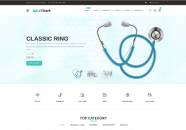
Unlocking the Power of AI Tools: A Guide to Getting Started
Artificial Intelligence (AI) has revolutionized the way we live and work, transforming industries such as healthcare, finance, and marketing. But what are AI tools, exactly? And how can they help your business thrive in today's fast-paced digital landscape?


What are AI Tools?
AI tools are software applications that use machine learning algorithms to analyze data, make predictions, and automate tasks. They're designed to mimic human intelligence, allowing businesses to make informed decisions, optimize processes, and improve customer experiences.
Types of AI Tools
1. Chatbots: AI-powered chatbots can handle customer inquiries, respond to queries, and provide support.
2. Predictive Analytics: AI tools help predict demand, forecast sales, and optimize inventory levels by analyzing historical data and market trends.
3. Content Generation: AI-powered content generation tools create high-quality content, such as articles, social media posts, and product descriptions.
4. Image Recognition: AI-powered image recognition tools analyze product images, detect defects, and provide accurate descriptions for customers.
5. Marketing Automation: AI tools automate marketing processes, such as email marketing, lead scoring, and customer segmentation.
Benefits of Using AI Tools
1. Increased Efficiency: AI tools automate repetitive tasks, freeing up staff to focus on high-value activities.
2. Improved Accuracy: AI-powered tools reduce errors and improve accuracy in data analysis, decision-making, and customer service.
3. Enhanced Customer Experience: AI tools provide personalized experiences, respond to queries, and offer 24/7 support.
4. Competitive Advantage: Businesses that adopt AI tools can gain a competitive advantage by staying ahead of the curve and improving operational efficiency.
Popular AI Tools for Business
1. HubSpot: A comprehensive marketing platform that uses AI-powered tools for lead scoring, email marketing, and customer segmentation.
2. Google Cloud: A suite of cloud-based services that includes AI-powered tools for predictive analytics, content generation, and image recognition.
3. Microsoft Azure: A set of cloud-based services that includes AI-powered tools for machine learning, natural language processing, and computer vision.
4. IBM Watson: A suite of AI-powered tools that help businesses analyze data, make predictions, and optimize processes.
Getting Started with AI Tools
1. Assess Your Needs: Determine which AI tool will best meet your business needs and goals.
2. Choose the Right Platform: Select a platform or software that integrates seamlessly with your existing systems and workflows.
3. Start Small: Begin by implementing AI tools in small areas, such as customer service or marketing automation.
4. Monitor and Evaluate: Continuously monitor the performance of AI tools and evaluate their impact on business operations.
Common Mistakes to Avoid When Using AI Tools
1. Underestimating Data Quality: Poor data quality can lead to inaccurate results and decreased effectiveness of AI tools.
2. Ignoring Bias and Fairness: AI systems can perpetuate biases if training data is biased, leading to unfair outcomes for certain groups.
3. Not Integrating with Existing Systems: Failing to integrate AI tools with existing systems can lead to fragmentation and decreased efficiency.
Conclusion
AI tools have the potential to revolutionize your business by providing personalized experiences, improving customer satisfaction, and increasing sales. By understanding what AI tools are, how they work, and how to get started, you can unlock new opportunities for growth and improvement. Remember to assess your needs carefully, choose the right platform, and monitor performance closely to ensure that AI tools live up to their full potential.
Recommendations
1. Stay Up-to-Date: Stay informed about the latest trends and innovations in AI and business applications.
2. Invest in Data Quality: Ensure that your data is accurate, complete, and up-to-date to produce high-quality results from AI tools.
3. Collaborate with Experts: Collaborate with experts who can help you choose the right AI tool for your business needs and goals.
4. Focus on ROI: Focus on generating a strong return on investment (ROI) from AI tools by measuring their
impact on business operations and customer experiences.

























































Mark Jecno ( 12 Jannuary 2018 at 1:30AM )
Donec rhoncus massa quis nibh imperdiet dictum. Vestibulum id est sit amet felis fringilla bibendum at at leo. Proin molestie ac nisi eu laoreet. Integer faucibus enim nec ullamcorper tempor. Aenean nec felis dui. Integer tristique odio mi, in volutpat metus posuere eu. Aenean suscipit ipsum nunc, id volutpat lorem hendrerit ac. Sed id elit quam. In ac mauris arcu. Praesent eget lectus sit amet diam vestibulum varius. Suspendisse dignissim mattis leo, nec facilisis erat tempor quis. Vestibulum eu vestibulum ex.
Mark Jecno ( 12 Jannuary 2018 at 1:30AM )
Donec rhoncus massa quis nibh imperdiet dictum. Vestibulum id est sit amet felis fringilla bibendum at at leo. Proin molestie ac nisi eu laoreet. Integer faucibus enim nec ullamcorper tempor. Aenean nec felis dui. Integer tristique odio mi, in volutpat metus posuere eu. Aenean suscipit ipsum nunc, id volutpat lorem hendrerit ac. Sed id elit quam. In ac mauris arcu. Praesent eget lectus sit amet diam vestibulum varius. Suspendisse dignissim mattis leo, nec facilisis erat tempor quis. Vestibulum eu vestibulum ex.
Mark Jecno ( 12 Jannuary 2018 at 1:30AM )
Donec rhoncus massa quis nibh imperdiet dictum. Vestibulum id est sit amet felis fringilla bibendum at at leo. Proin molestie ac nisi eu laoreet. Integer faucibus enim nec ullamcorper tempor. Aenean nec felis dui. Integer tristique odio mi, in volutpat metus posuere eu. Aenean suscipit ipsum nunc, id volutpat lorem hendrerit ac. Sed id elit quam. In ac mauris arcu. Praesent eget lectus sit amet diam vestibulum varius. Suspendisse dignissim mattis leo, nec facilisis erat tempor quis. Vestibulum eu vestibulum ex.